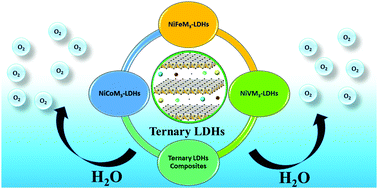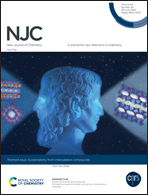Recent advances in ternary layered double hydroxide electrocatalysts for the oxygen evolution reaction
Abstract
The high demand for energy by our society, and consequent large consumption of fossil fuel, is leading not only to its depletion but also to increasing environmental pollution, thus urging the development of clean and renewable energy sources such as based in solar energy and water in a cyclic way, by photoinduced water-splitting and regeneration in fuel cells. This means being in command of the tetra-protonic and tetra-electronic reaction mechanism of the oxygen evolution reaction, a formidable challenge that is starting to be overcome using catalysts based on more abundant and inexpensive elements. Interestingly, the most promising ones in this context are low-cost materials based on NiFe, NiCo and NiV-LDH precursors, highly flexible and tunable materials that would enable large-scale production, storage and utilization in a more convenient and safe manner. In fact, the vast majority of high performance electrocatalysts based on ternary LDHs are being produced by doping of that matrix with Co2+/3+ and V2+/3+/4+ ions to modulate the electronic and structural properties of NiFe-LDH metal sites, thus reducing the OER overpotentials while activating and increasing the concentration of active sites and improving the OER rate. On the other hand, the V ion coordination geometry can be distorted from octahedral to tetrahedral and used to induce very strong electronic effects to the neighboring transition metal ions to adjust the metal–oxygen bond energy in the transition state to the expected optimal value, and optimize the O2 release in the OER process. Finally, nanostructuration and deposition on suitable conducting materials generating nanocomposites can be used as additional strategies to enhance further the conductivity as well as the concentration and number of available active sites, while facilitating the electrolyte diffusion, thus improving their electrocatalytic performances. In short, catalysts for oxygen evolution reaction based on ternary LDHs were reviewed considering their key role in the way to a more sustainable society.

- This article is part of the themed collections: 2020 Focus and Perspective articles and Sustainability from intercalation compounds


 Please wait while we load your content...
Please wait while we load your content...